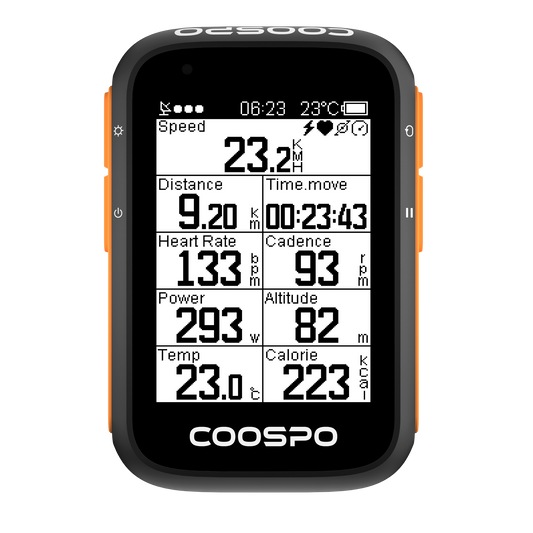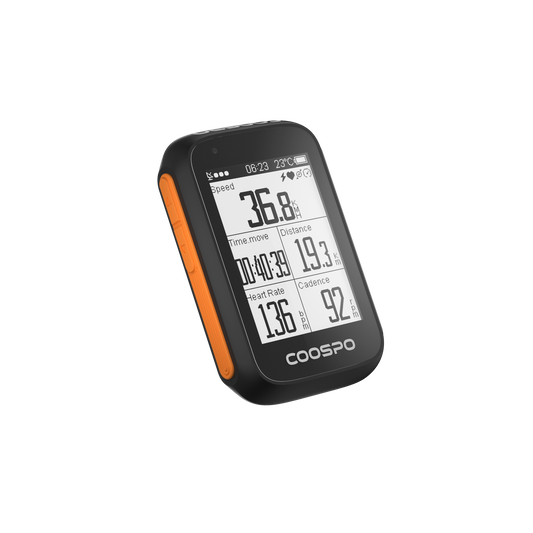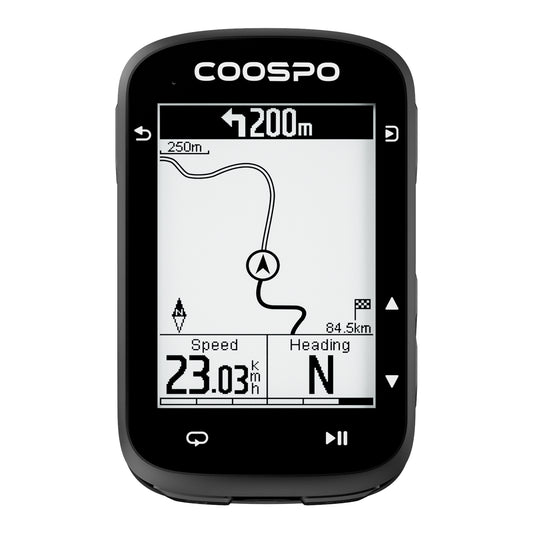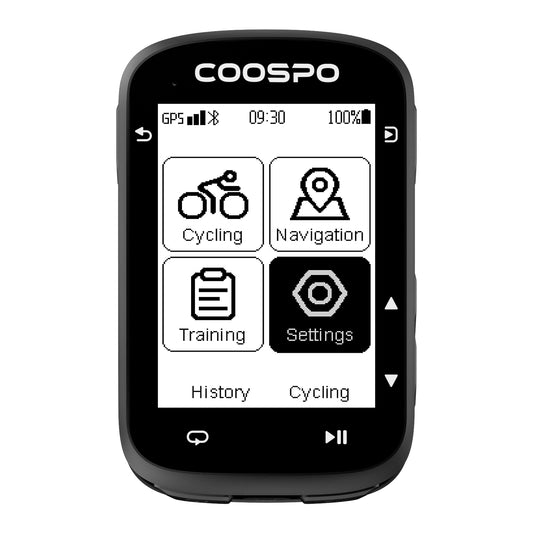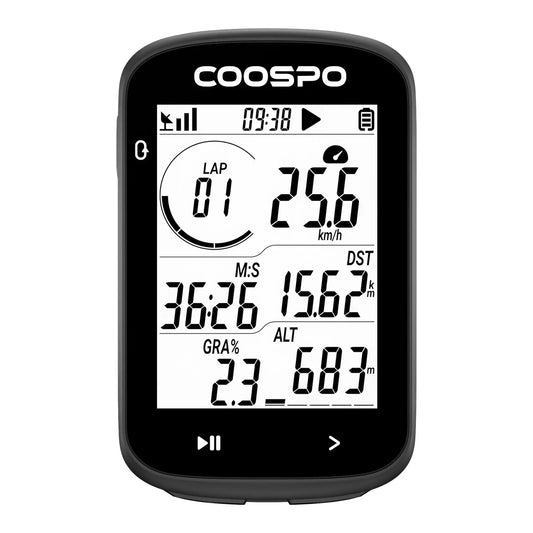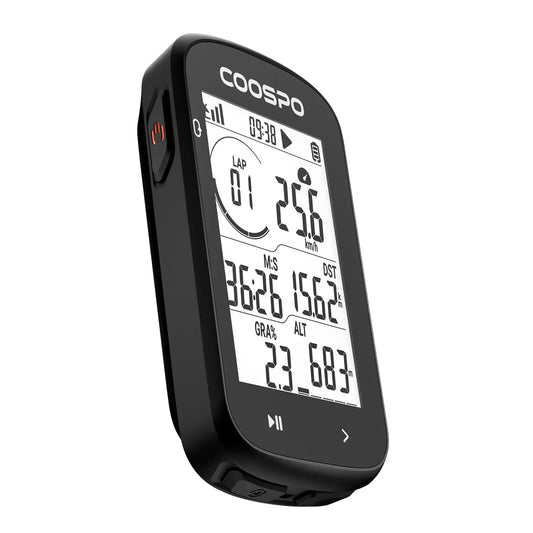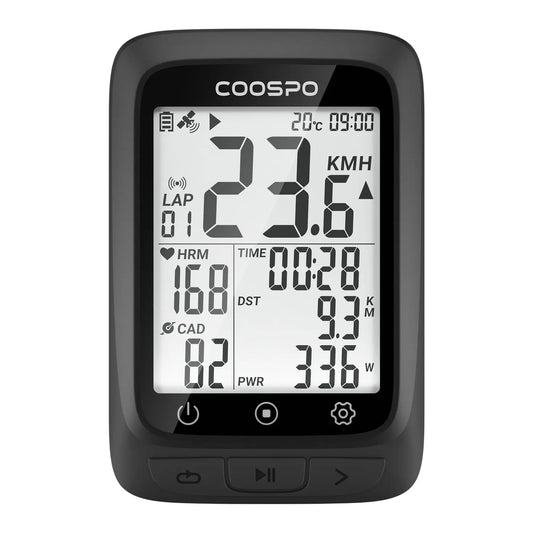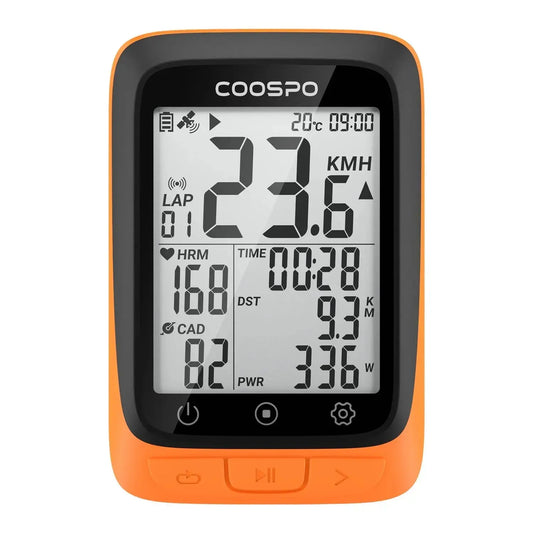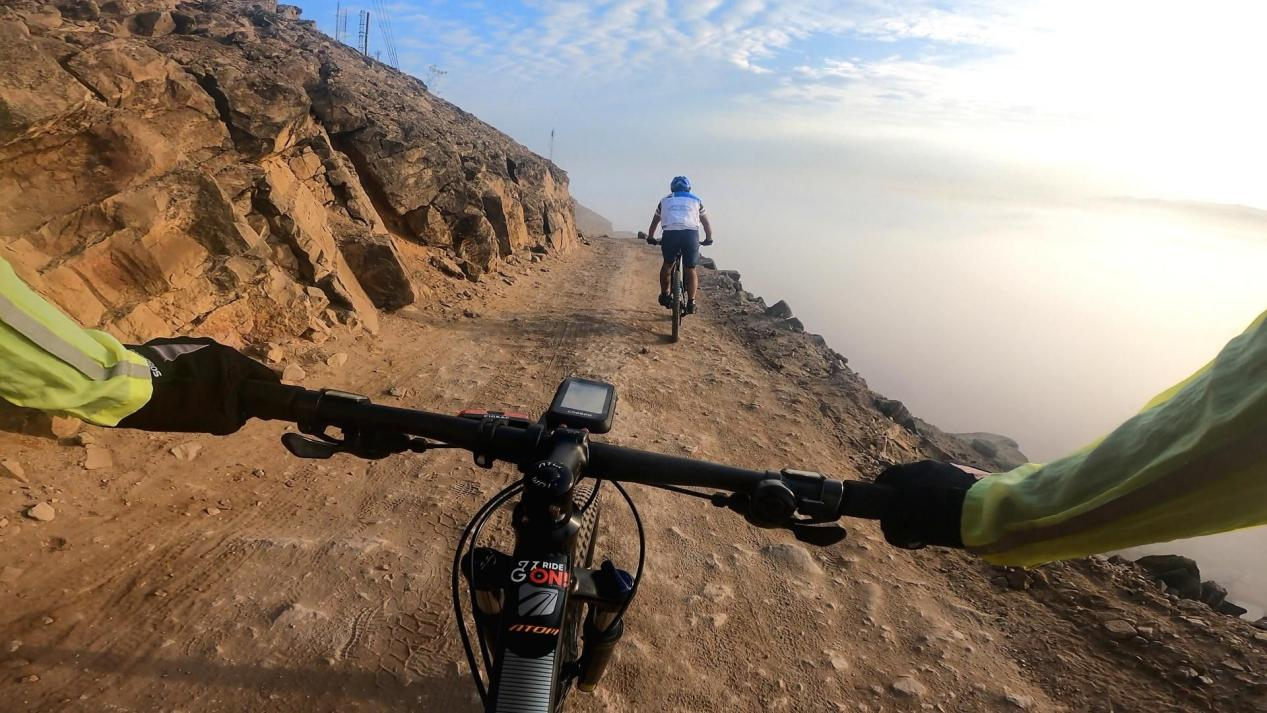Was ist Cadence ? Wie kann ich ? verbessern
Als wir mit dem Radfahren anfingen, war es leicht, sich in der Terminologie zu verlieren. Wir merkten schnell, dass es viele Wörter gibt, die vor allem für Anfänger verwirrend sein können. Eines dieser Wörter ist „Trittfrequenz“ und es ist ein wichtiges Konzept, das man verstehen muss, wenn man seine Leistung beim Radfahren verbessern möchte.
Was ist Kadenz?
Bei der Trittfrequenz handelt es sich um ein grundlegendes Konzept: Es geht um die Geschwindigkeit, mit der wir beim Fahren in die Pedale treten, gemessen in Umdrehungen pro Minute.
Beim Anschauen von professionellen Radrennen kann man beobachten, dass die Trittfrequenz der Profis normalerweise sehr hoch ist, insbesondere auf flachen Strecken, wo sie 100 Umdrehungen pro Minute (U/min) oder mehr betragen kann.
Obwohl die meisten Profis bei Anstiegen etwas langsamer treten, ist ihre Trittfrequenz immer noch viel höher als die des durchschnittlichen Enthusiasten. Der durchschnittliche Freizeitradfahrer tritt normalerweise mit einer Geschwindigkeit zwischen 60 und 80 Umdrehungen pro Minute in die Pedale, während der Amateurradfahrer 80 bis 90 Umdrehungen pro Minute erreichen kann.
Warum ist Trittfrequenz wichtig?
Die Trittfrequenz ist ein wichtiger Messwert, da sie die Leistungsfähigkeit unseres Fahrrads beeinflusst. Die Leistung wird berechnet, indem die Kraft, mit der wir in die Pedale treten (Drehmoment), mit der Geschwindigkeit, mit der wir die Pedale drehen (Trittfrequenz), multipliziert wird.
Wenn Sie beispielsweise zu langsam treten (also mit niedriger Trittfrequenz), belasten Sie Ihre Muskeln und Gelenke stärker, was zu Ermüdung und sogar Verletzungen führen kann. Wenn Sie hingegen zu schnell treten (also mit hoher Trittfrequenz), erreichen Sie möglicherweise nicht das Maximum an Leistung, was bedeutet, dass Sie sich mehr anstrengen als nötig.
Studien haben gezeigt, dass beim Radfahren mit einer niedrigeren Trittfrequenz die Muskeln des Fahrers in der Regel stärker beansprucht werden, während beim Radfahren mit einer höheren Trittfrequenz eine größere Belastung auf das Herz-Kreislauf-System des Fahrers übertragen wird.
Wenn ein Fahrer körperlich stark ist, fühlt er sich möglicherweise wohler, wenn er einen höheren Gang mit niedrigerer Trittfrequenz einlegt. Ein schlankerer Fahrer hingegen bevorzugt möglicherweise einen leichteren Gang mit höherer Trittfrequenz.
Starkes Treten bei niedriger Trittfrequenz führt eher zu Muskelzerrungen und Muskelkater als Treten bei höherer Trittfrequenz in einem leichteren Gang.
Wenn Sie zu schnell in die Pedale treten, kann Ihr Fahrrad wackeln, wodurch Sie langsamer treten und schneller ermüden.
Messung der Trittfrequenz
Die einfachste Methode, die Trittfrequenz zu messen, besteht darin, im Kopf zu zählen, wie oft sich unsere Beine in einer Minute auf und ab bewegen. Um jedoch eine genauere Aufzeichnung zu erhalten, können wir elektronische Geräte verwenden, wie z. B. Trittfrequenzsensoren.
Coospo hat einen Trittfrequenzsensor BK9C. BK9C ist mit einem fortschrittlichen Dual-Meter-Hybridalgorithmus ausgestattet. Verabschieden Sie sich von Magneten, da dieser Sensor eine Echtzeit-Trittfrequenzmessung mit beispielloser Präzision bietet. Verbessern Sie Ihre Fahrleistung und optimieren Sie Ihr Radfahrerlebnis mit dieser Spitzentechnologie.
Der Coospo Trittfrequenzsensor kann verbunden werden mit dem Coospo Fahrradcomputer. So können Sie Ihre Trittdaten bequem während der Fahrt direkt auf dem Fahrradcomputer ablesen.
So können Sie während und nach dem Training die Trittfrequenzdaten mit dem Fahrradcomputer analysieren.

Was ist die ideale Trittfrequenz in RPM?
Auf diese Frage gibt es keine allgemeingültige Antwort. Die „ideale“ Trittfrequenz ist von Person zu Person unterschiedlich und hängt von mehreren Faktoren ab, wie z. B. Gelände, Fahrintensität, Distanz und mehr.
Normalerweise findet jeder Radfahrer seine eigene optimale Trittgeschwindigkeit. Erfahrene Radfahrer sind dabei tendenziell genauer.
Um besser zu fahren, probieren Sie verschiedene Geschwindigkeiten aus, um herauszufinden, was sich für Sie am besten anfühlt. Beim Üben geht es darum, in einem guten Rhythmus zu treten, nicht nur darum, schneller zu treten.
Beim Fahren müssen Sie in verschiedenen Situationen schneller oder langsamer treten. Außerdem kann das Üben mit unterschiedlichen Geschwindigkeiten uns helfen, besser zu fahren und auf unterschiedliche Situationen vorbereitet zu sein.
Das Training mit einer höheren Trittfrequenz bei geringerer Belastung verbessert die Gleichmäßigkeit unseres Tretvorgangs, während das Training mit niedrigerer Trittfrequenz und höherer Belastung beim Kraftaufbau hilft.
Durch das Training auf der Rollmaschine können wir sanfter in die Pedale treten und unser Können kann sich durch gezieltes Training schneller verbessern als durch lange, ziellose Fahrten.
Zwei Übungen zum Pedaltreten
1. Training für Trittsicherheit und Koordination
20-minütiges Intervalltraining:
Treten Sie 4 Minuten lang mit einer Geschwindigkeit von 120 Umdrehungen pro Minute kräftig in die Pedale. Fahren Sie dann 1 Minute lang locker. Wiederholen Sie dies insgesamt 4 Mal, also 20 Minuten lang. Versuchen Sie, Ihren Oberkörper während des Trainings ruhig zu halten, um Ihren Rumpf zu stärken. Und bringen Sie mehr Kraft ins Treten, indem Sie Ihre Latissimus-Muskeln einsetzen.
Wenn du möchtest, kannst du das gesamte Training nach einer Pause noch einmal wiederholen.
2. Kraft und Ausdauer aufbauen
Um unsere Kraft aufzubauen, trainieren Sie mit niedriger Trittfrequenz und hoher Leistungsabgabe.
Um diese Übung abzuschließen, fahren Sie in einem gleichmäßigen Tempo, das sich herausfordernd anfühlt, aber machbar ist, und zwar zwei Durchgänge von jeweils 15 Minuten. Streben Sie bei jedem Durchgang eine Drehzahl von 50 bis 60 an und machen Sie zwischen den Durchgängen eine Pause von 10 bis 15 Minuten, um sich vollständig zu erholen, bevor Sie mit dem nächsten Durchgang beginnen.
Mit zunehmender Leistung und Verbesserung können Sie die Intensität Ihrer Übungen erhöhen und die Geschwindigkeit verringern.
Fazit
Daher ist es wichtig, die richtige Trittfrequenz für Sie und Ihren Fahrstil zu finden. Dies kann von verschiedenen Faktoren abhängen, wie z. B. Ihrem Fitnessniveau, dem Gelände, auf dem Sie fahren, und Ihren persönlichen Vorlieben. Einige Radfahrer bevorzugen eine höhere Trittfrequenz, während andere eine niedrigere bevorzugen. Letztendlich ist es wichtig, eine Trittfrequenz zu finden, mit der Sie über längere Zeiträume bequem und effizient fahren können.
Denken Sie daran, dass Sie möglicherweise einige Versuche und Irrtümer benötigen, um die richtige Trittfrequenz für sich zu finden. Scheuen Sie sich nicht, mit verschiedenen Trittfrequenzen zu experimentieren und zu sehen, wie sie sich anfühlen. Mit etwas Übung und Geduld können Sie Ihre Trittfrequenz verbessern und ein stärkerer, effizienterer Radfahrer werden.



